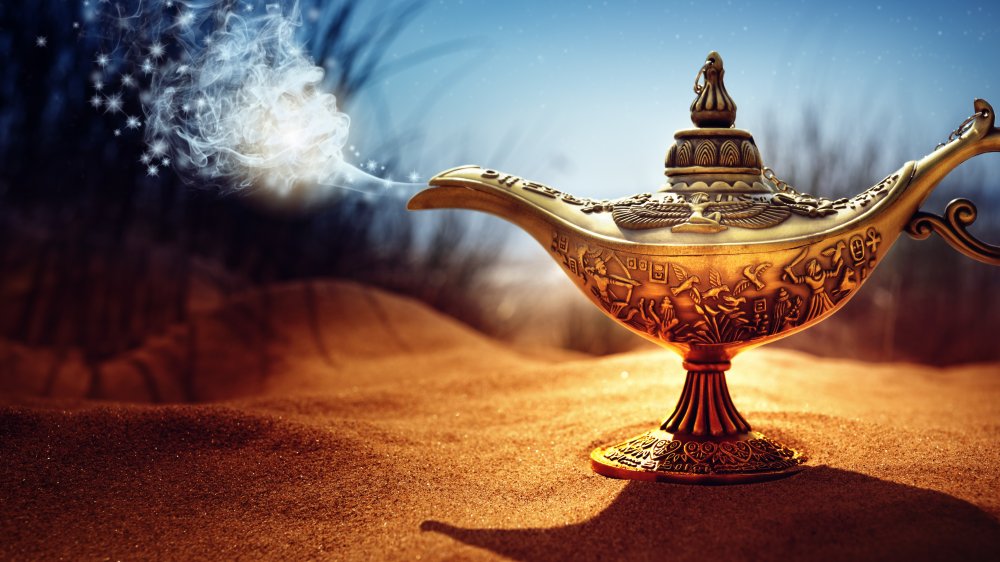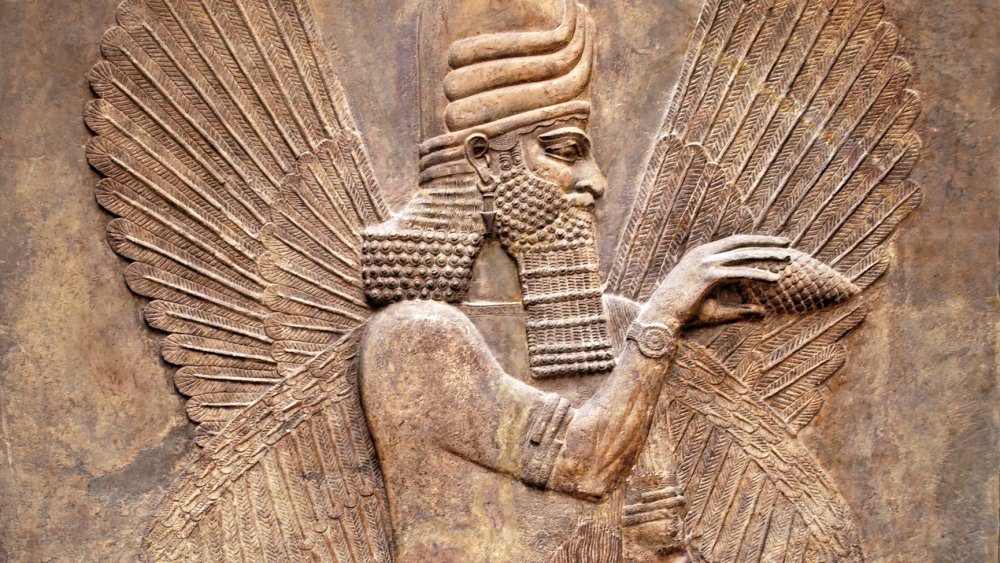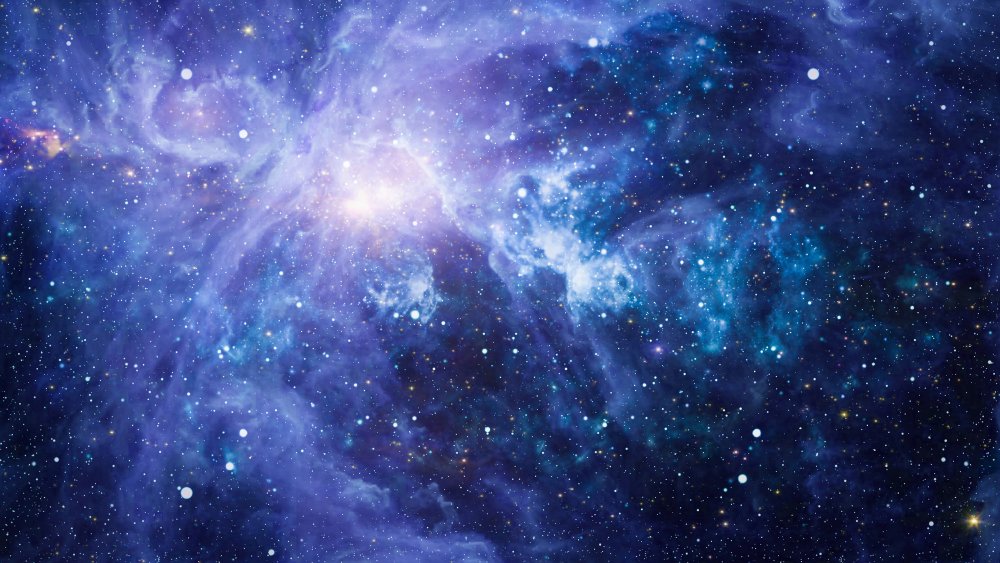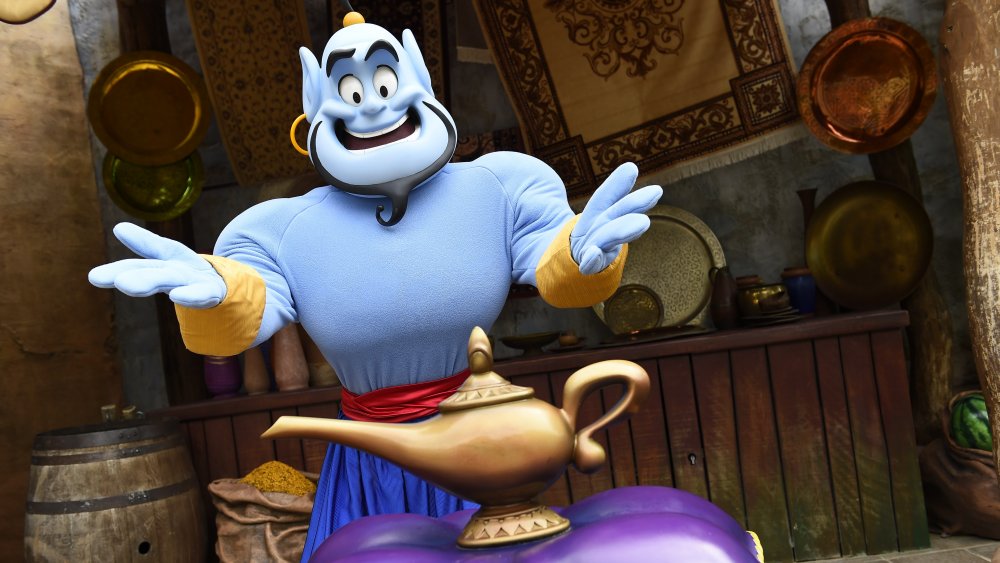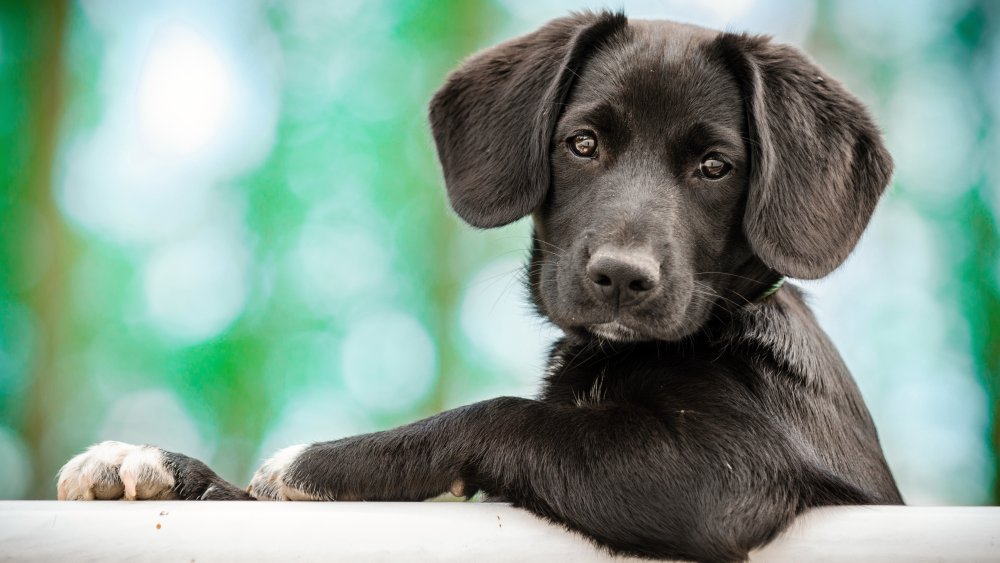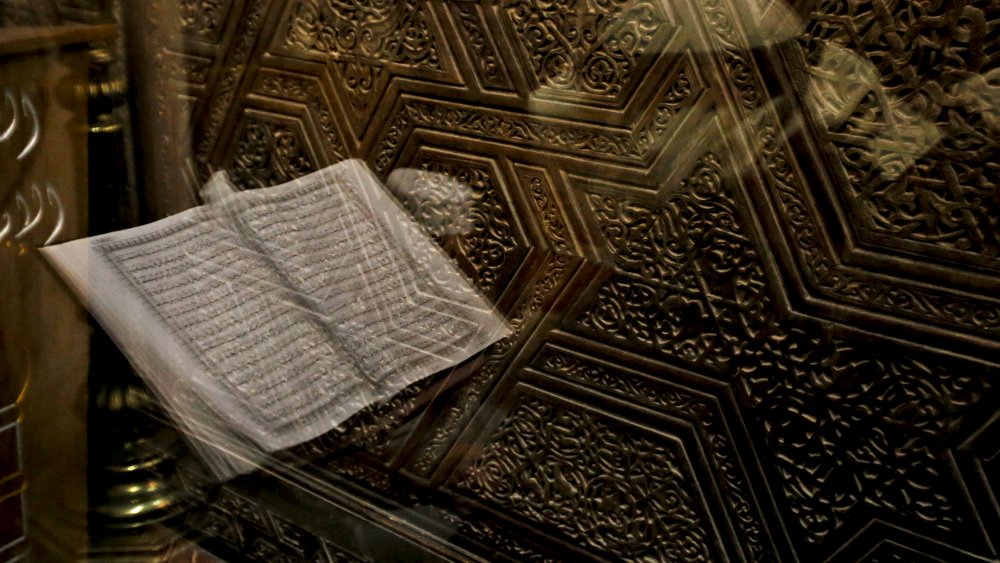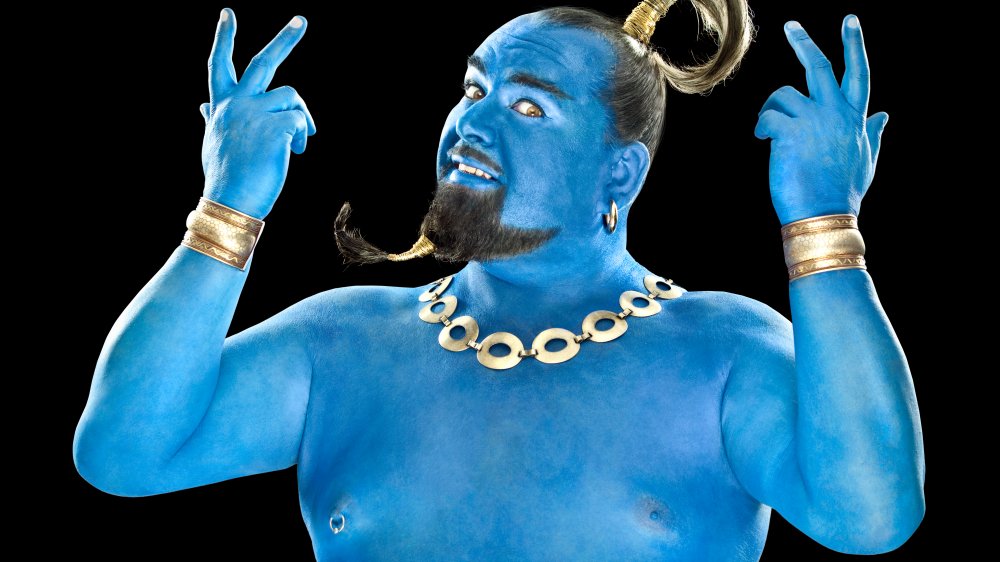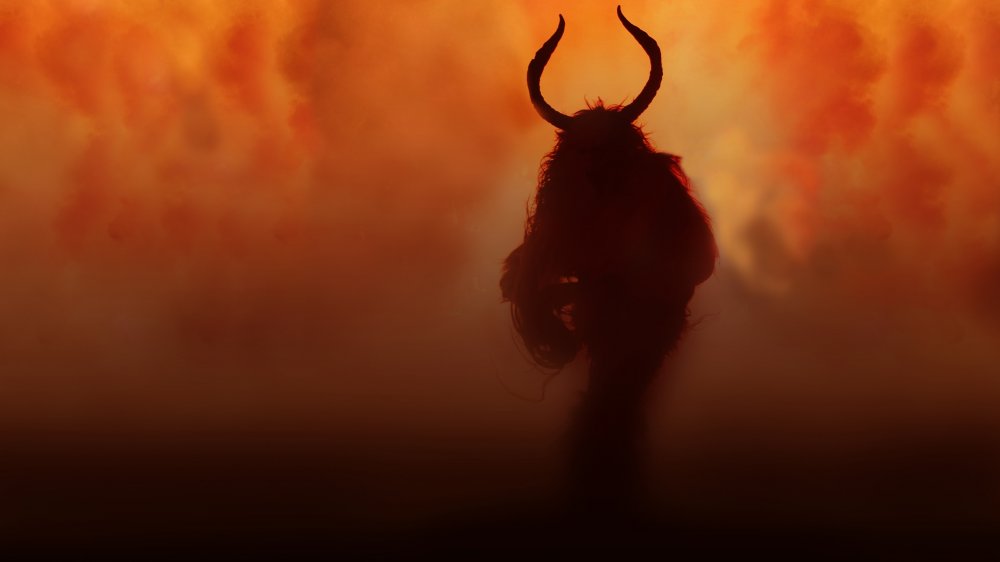The Legend Of Genies Explained
As with most mythological creatures, genies have morphed over time from near-godlike entities that were worshiped in the Middle East to cartoonish pop culture renderings. It's almost insulting that genies have been reduced to three drops of folklore mixed in with a variable sea of whimsy, all to make them easier to sell to a family-friendly market, especially when the old tales are just as interesting, verging on the depth of intricacy you'd find in the old-god mythos. And, in all reality, there are times genies are downright terrifying.
Originally appearing as "jinn," or "djinn," their powers, personality, interaction with humans, and place in folklore were all very different than the larger-than-life Will Smith and Robin Williams versions Disney gave us, though, admittedly, they're great characters. But you weren't usually going to find a genie confined to a lamp, and if you did, they weren't waiting to become some lucky lad or lady's personal wish-granting machine. Going outside their popularity in the West, the jinn (as we'll refer to them from here on out) were a rich part of the history, culture, and religions of the Middle East. Honestly, they're pretty cool.
Jinn are older than you might think
If you grew up in the Western world, your first introduction to the race of jinn was most likely through the story of Aladdin or perhaps through the fairly obscure horror film Wishmaster from the '90s. Or maybe you actually read One Thousand and One Nights in English class instead of slacking off like the rest of us and can trace your jinn knowledge to the beginning of the 18th century. If you grew up in the Islamic faith, you know the jinn are much much older than the advent of film. Regardless, archaeological and scholarly evidence place the belief in jinn back even further than when Muhammad brought Islam to the world.
The pre-Islamic roots of the jinn are widely accepted among scholars, but the exact origin is difficult to ascertain. Some historians, according to "The Evolution of the Concept of the Jinn," believe that jinn are adaptations from ancient Mesopotamia, while others argue that they were shaped through Persian influence. All tend to agree that the Arabian Peninsula and Islam are at the center of jinn belief as we see it today. Per Encyclopedia Britannica, Muhammad worried that it might be jinn whispering in his ear pretending to be the voice of Allah, thus confirming that jinn were around before Islam, and Muslims recognize that jinn are older than their religion. In fact, they believe they're older than the race of man itself.
Jinn have been absorbed into the Islamic creation story
There's a common thread throughout religious history that links newer religions to older ones. When a new religion emerges, it takes facets of older superstitions and finds a way to wrap them into the new pantheon. At least, they do if they want to be successful for any reasonable length of time. It's why Christmas falls around the winter solstice and why the world still celebrates Halloween. By keeping these pieces of religions past, the transition between the new and the old is made easier for converts. People flocking to the new religion now have a shred of their old ways to help guide them into the belief system. Islamic and the pre-Islamic jinn are no exception.
In Islamic tradition, jinn were around before man. Well, they were around before all living creatures on Earth, holding the status of God's first sentient creation to walk the planet, according to "A Brief Overview of al Jinn within Islamic Cosmology and Religiosity." They aren't the angels who inhabited the heavens but Earthbound creatures who were made by Allah from smokeless fire. In contrast, mankind was shaped from clay and angelic beings from light. Each creature was made on its own day: angels on Wednesday, jinn on Thursday, and humans on Friday. However, some believers think these days were thousands of years apart, like Monday and the weekend.
Jinn weren't exactly wish-granters
Say you're as lucky as Aladdin or Captain Tony Nelson, and you find a bottle in the sand. You open the bottle, and out pops a jinni. Should you start making wishes? Probably not. Sure, Aladdin did receive help from two different jinn in One Thousand and One Nights, but if you look at one of the other jinn from the collection, a very different picture emerges.
In the tale of "The Fisherman and the Jinni," an old man fishes up a bottle containing a pretty peeved jinni who was trapped by the great sorcerer Solomon. The jinni offers the man a wish of sorts — but only one and only a very specific one: the way in which he dies. See, the jinni had planned to kill whoever released him. Don't worry, though, the old man was sly and tricked the jinni back into his bottle.
Traditionally, jinn could be controlled by magicians. Even under a master's control, however, a jinni wasn't some all-powerful being. It would be more like having an indentured servant who happened to have a few powers of their own. Granted, having a servant with powers like possession, super speed, super strength, and so on could be a major asset to a magician, but that didn't automatically put jinn in the business of making every desire come to fruition. It's widely known among believers that it's best to stay out of jinni's way.
Jinn were shapeshifters
Since most mythological entities were originally passed down through the ages via oral traditions, it's not always easy to narrow down their specifics. With the jinn, some stories claim they're invisible entirely to the human world. In other tales, the jinn appear to anyone astute enough to catch a glimpse. In the Islamic tradition, they only tend to appear to people who are prophets or when the jinni is taking on a similar role to that of a demon, influencing people from the shadows without taking on a corporeal form.
Generally, it's believed that jinn can take on animal forms or amalgamations of different animals, such as when they appeared to Solomon. Sometimes, jinn take human form as well, though they appear most often as snakes or dogs. Specifically, according to Islam Question & Answer, evil jinn will appear as black dogs or black cats. According to a National Geographic interview, believers who live in the Ustyurt Plateau, which lies in Kazakhstan and Uzbekistan, will attest that jinn aren't good at taking human form. From a distance, you'd confuse them with people, but at a closer glance, their form would be off, mainly in the feet. They'd be switched around, both right or left, or straight-up backwards. It's apparently the way to spot them — you know, in case it comes up.
Jinn are a big part of Muslim and Arabian culture
The stories of jinn in folklore still have an effect on people living within Arabian and Muslim culture today. That's not to say that every Arab or Muslim accept the jinn's existence as truth. There's some division over the topic within different Islamic ways of thought, but for the many who still believe in jinn, they do because of a passed-down tradition of cultural superstition or because logic compels them to. That is, if jinn exist within the holy scriptures and one believes in said holy scriptures, then one, therefore, believes in jinn. Of course, that logic only pertains to those who view the holy texts as the literal word of God.
In parts of the Middle East, people will go about their lives actively avoiding harming certain animals, like snakes, or asking for permission before dumping hot liquids on the ground so they don't accidentally harm a jinni or their offspring. The possibility of having to face the backlash from such an action is worth the caution. According to a person living in the Ustyurt Plateau, you should try to avoid taking directions from jinn because doing so would lead you to walk in circles until you dropped dead from dehydration. When asked for jinn stories by a Buzzfeed journalist, several people responded fearfully, worried that they might summon the creatures by talking about them.
Unlike angels and demons, jinn have free will
Angels are servants of God who were created specifically for that purpose and have no choice in the matter. Jinn, on the other hand, were created on Earth with the same purpose as humans: to worship Allah, according to IslamReligion.com. And, just like humans, they get to choose whether or not they're Muslim, with all the blessings or damnation that comes along with it. In the early state of the world before humans were created, a lot of the jinn decided that they'd do whatever they wanted, and they kind of upset Allah. By "kind of upset," we mean he wiped most of them out, according to "A Brief Overview of al Jinn within Islamic Cosmology and Religiosity."
It's a good thing free will isn't the only thing jinn share with humans, or they could've been goners: Jinn procreate. If they didn't bear children, then their entire species would have died out in the beginning because that's a thing jinn do: They die. Jinn have a regular life cycle, complete with Hell or Heaven waiting for them at the end. They're born to a mother and father, they eat food, they drink, and they're as prone to emotion as we are. So, where some jinn decide to be evil and others decide to be benevolent, most jinn fall somewhere in between.
Jinn take the rap for mental and physical illnesses
One of the jinn's powers is possession, which they can only do when someone is in a spiritually weakened state, such as grief or questioning their faith. This power gets the jinn into some trouble. See, possession is one of the first things humans used to explain away certain mental illnesses. Mix possession with the belief that jinn can inflict disease and sleep paralysis, and we have ourselves a poop storm of blame. Obviously, other cultures attribute these same things to possession or demons and have since the advent of religion, but we're talking about jinn here.
This isn't just a historical pastime, either — it's a real problem today. Professor Swaran Singh of the Warwick Medical School discussed a five-year study he performed on the subject of jinn possession with the BBC, explaining that those who still believe in jinn have a tendency to seek religious help and claim jinn possession when experiencing extreme mental health issues like schizophrenia. Some patients in the study went over a decade without receiving psychological help because they explained their disease away with the jinn. In one case, family members accidentally killed a woman while attempting to drive out the jinni who was possessing her. Whether you believe in jinn or not, human stories can be more terrifying than jinn possession.
Jinn have been downgraded in cultural status with the introduction of Islam
Neil Gaiman's American Gods depicts a jinni (and other gods) being forgotten or downgraded over the centuries, which is an entertaining way of explaining how ancient gods are often powered down to make way for a monotheistic religion. Long before the jinn were part of Islam, they were worshiped like a kind of minor god in the same way spirits tend to be viewed in ancient Chinese superstition and Shinto. The only thing really keeping them from godlike status was a jinni's natural life span. Real gods didn't just die of old age.
According to Shiavault, jinn worship was widespread across the Arabic world at one point in history. However, in the spirit of monotheism, the Quran naturally opposes the worship of any being that isn't Allah and therefore opposes jinn worship. Along with that admonition, the legendary jinn were stripped of most of the power they held in old folktales. They could still possess people, they were mildly stronger and much faster than humans, and they could change shape, but no longer could they invoke storms and perform miracles. They could be defeated with the word of God, so no need for talismans or mysticism anymore. Alas, the jinn had been dwarfed under the power of Allah.
Jinn have played the role of muses
There's an interesting correlation that jinn have with the daimon of the ancient Greek pantheon. In Greek mythology, each human had their own daimon, who acted kind of like a guardian angel. Well, according to Islamic scripture, each human has a jinn appointed to them. Both jinn and daimon have one other thing in common: They've been muses of inspiration.
Enough poets throughout history have claimed to have had their work inspired by jinn that it's become its own tradition, according to HuffPost. The tradition states that there are two different and distinct types of poets: There are those who have honed their craft and those who are inspired by or are channeling the jinn. The Arab poet Kuthayyir 'Azzah, who lived during the time Islam came into being, claimed that his poetry was recited to him by his jinn double, and he just kind of wrote it down, which, if true, means the jinni wrote poetry based on the obsession over a married woman. Other poets, like Hassan ibn Thabit and Abu Nuwas, also claim to have had their work inspired by the whispers of jinn. With art being such a fluid, abstract concept, who's to say it isn't inspired by supernatural forces?
Jinn can interact with humans in unexpected ways
We already know that jinn can possess people or influence them from the shadows, and we already know that jinn have very human desires. But what happens when a jinni's desire mixes with their ability to influence the world? Usually, something lustful and forbidden.
According to Lapham's Quarterly, the jinn of folklore had a serious longing to perform certain adult acts with humans. The lust was strong enough that it was thought commonplace for a male jinni to sneak his way into an already occupied bedroom so he could weasel himself into an already involved couple. Copulation between a human and a jinni could produce offspring called "khunnas" or "Nasnas." According to MangoBaaz, the Nasnas only have one vertical half of a body. That's folklore, mind you — in Islam, jinn and humans can't officially procreate or interact physically in any way.
It's also been claimed that jinn have committed other wild acts, like stealing a person's cell phone and throwing stones at them, which, according to the BBC, one jinni was sued for in 2009. The family claimed the jinni was harassing them to drive them away from their new home. Lapham's Quarterly says the court didn't have enough evidence to continue the case.
There are different types of Jinn
Jinn come in different types, and different types of types, depending on who's doing the classification, and pretty much none of them look or act like the Western portrayals. As far as Islam is concerned, the main three types of jinn are: a winged type that can fly, one that takes the forms of dogs and serpents, and a final one that stops to take a rest before moving on. The criteria they're judging on doesn't seem quite clear, but it's from an old book, so it's possible that the context got lost somewhere in time.
The Ghul, a shape-shifting type that eats bones and is known to prey on people, is sometimes classified as a jinn, but Amira El-Zein, in her book Islam, Arabs, and the Intelligent world of the Jinn, disagrees with the classifications. Instead, she says jinn are classified as generic jinn, marid, or ifrit. Marid are said to be the oldest of the jinn and also the most powerful, and these jinn are actually blue. Ifrit aren't quite as powerful as marid. They tend to appear as smoke and take on a winged form. All jinn can be good or evil, but it's said that marid have the tendency to be the most evil, which isn't a trait you'd want in the most powerful jinn.
